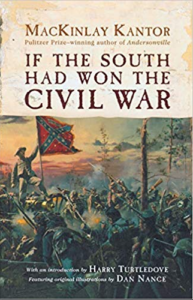Civil War Quiz: What Do You Know About These Obscure Facts of the Civil War?
Q#1 – While rifles and cannons were the deadliest weapons during the war, disease killed more men. Camps became breeding grounds for measles, chicken pox, and mumps. One million Union solders contracted which disease?
Q#2 – What was the age of the youngest soldier in the Civil War who came from Mississippi? What was the age of the oldest soldier in the Civil War who came from Iowa?
Q#3 – What was the original name for Memorial Day?
Q#4 – A Union prison camp had two observation towers constructed for onlookers. Citizens paid 15 cents to look at the inmates. Concession stands by the towers sold peanuts, cakes, and lemonade while the men inside starved. What was the prison camp’s name?
Q#5 – The Twenty-Sixth North Carolina Infantry at Gettysburg is known for what bloody statistic?
Q#6 – During the Civil War, more Civil War soldiers died from what disease than were killed in battle?
Q#7 – What happened to President Lincoln’s personal copy of the Emancipation Proclamation that would be worth millions if it were still in existence today?
Q#8 – General George Gordon Meade was the victor at the Battle of Gettysburg, the largest battle ever fought in North America. Where was Meade born?
Q#9 – An estimated four million slaves lived in the South by 1860. What was their estimated worth at the time?
Q#10 – What was the name of not only the first woman surgeon in U.S. Military history, but she was also the only woman in the Civil War to be awarded the Medal of Honor?
Q#11 – What was the criminal offense that produced over 100,000 Court Martials during the Civil War?
Q#12 – Although both the North and South did not allow women in the army, how many it is estimated actually fought disguised as men?
Q#13 – What were “Quaker guns”?
Q#14 – The first U.S. Medal of Honor was awarded during the Civil War on March 25, 1863. Who was it awarded to?
Q#15 – In 1860, which two states actually had more slaves than free people living in them?

